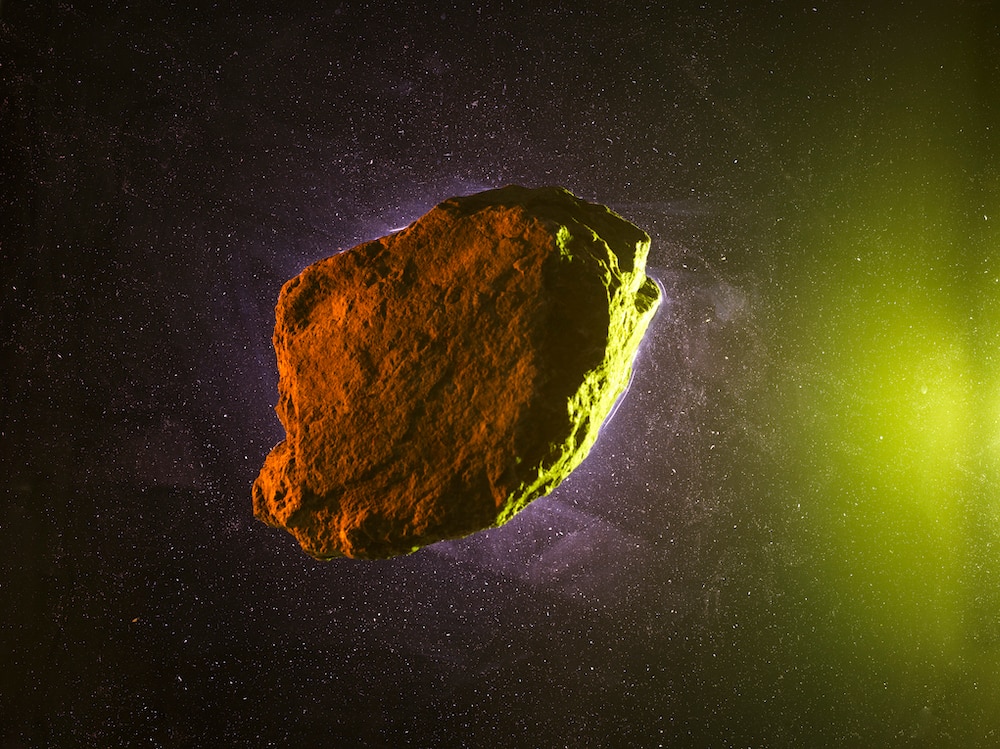Create a free profile to get unlimited access to exclusive videos, sweepstakes, and more!
Asteroids could destroy us, but they could have made it possible for life to survive on Earth
What can destroy can also create.

Asteroids have struck fear into the human species ever since we found out what annihilated the dinosaurs, but the same kinds of space rocks that have caused mass extinctions have another face.
Monster asteroids that have hurtled to Earth may have been the bringers of death, but also life. Whether or not panspermia really happened and alien microorganisms came along for the ride remains a mystery. However, asteroid impacts have changed Earth’s crust in ways that made our planet even more habitable, formed craters that turned into thriving habitats, and might have set off chemical reactions from which the first molecules needed for life emerged.
Seeking out other star systems with asteroid belts could mean a better chance at finding planets that might be crawling with life. What is problematic is that our own asteroid belt would not be visible in an exo-system like TRAPPIST-1 or Proxima Centauri. This is why astrophysicists Rebecca Martin and Mario Livio wanted to see how likely asteroid collisions would be in different types of planetary systems. They recently posted their findings on the preprint server arXiv.
“Asteroids can impact the Earth when their orbital eccentricity is increased,” Martin told SYFY WIRE. “This could happen through resonances. When an asteroid is within a resonance, its eccentricity gets excited, and its orbit can cross Earth's orbit and potentially collide with Earth.”
When two celestial bodies are orbiting another body (such as planets around a star or moons around a planet), the forces they regularly exert on each other during given periods are known as an orbital resonance. Their orbital periods have to be a ratio of two integers, so if one planet takes twice as long as the other to complete an orbit, that would be a 2:1 resonance. Just this qualifies as a mean-motion resonance. Secular resonances happen when the gradual rotation of the line connecting the nearest and furthest points in two bodies' orbits are also synchronized.
More asteroids can be flung towards Earth by secular resonances because they have so much more space. In our solar system, the resonance between Jupiter and Saturn is behind many asteroid impacts, and it puts the brakes on the eccentricity of asteroid orbits until they pass the orbit of Mars. Martian gravity will then send them flying out. Martin and Livio observed other star systems with massive planets to see whether a similar orbital resonance between them could possibly throw asteroids at other planets (if an asteroid belt exists close enough).
“It is thought that the reason that the asteroid belt exists where it does is because of Jupiter.,” said Martin. “Jupiter perturbed the asteroids in the region so they collided more violently and collisions led to fragmentation rather than growth. A planet was unable to form in this region.”
This is why you probably need planets that are behemoths in a system that is going to get bombarded with asteroid impacts. From running simulations of hypothetical systems with planets of varying sizes and orbital resonances, the researchers think that such planets need to be over a tenth of Jupiter’s mass and have orbital axes greater than 2 astronomical units (AU), meaning twice the distance from the Earth to the Sun. These planets can’t be too close to hypothetical Earthlike planets for obvious reasons. They need just enough distance.
Observing systems with two giant planets like Jupiter and Saturn can give away whether secular resonance within a hypothetical asteroid belt was possible. To find out the location of the resonance, if they really have asteroid belts, you have to know their semi-major axes, masses, and eccentricity. So if there really are other systems out there with asteroid belts that can’t yet be observed, Martin thinks that our solar system doesn’t really stand out so much, especially if there are planets lurking in those systems that might have been able to spawn life.
“We compare the locations of the planets to the expected location for the asteroid belt, relative to the planets and see if the resonance would be within the belt,” she said. “We are currently limited in what we can observe. I don't think that the solar system is too special.”


























